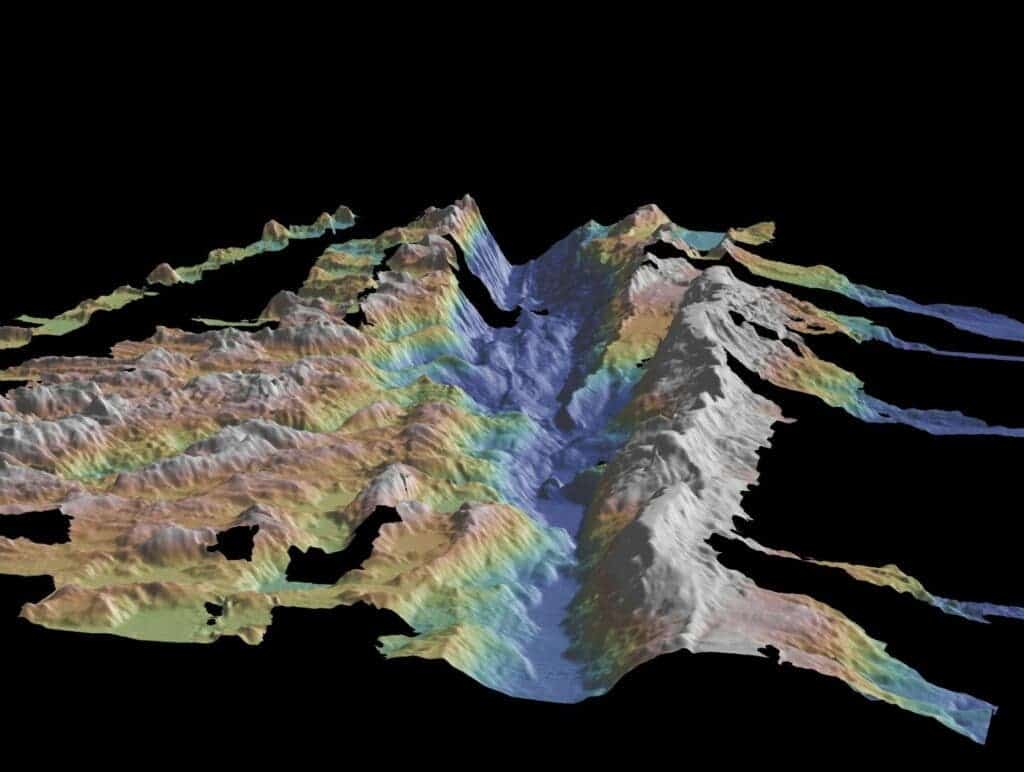Earthquakes usually start small and then extended outwards, causing tremors in and around their path. They may have aftershocks, but after a while, it’s over. But sometimes, earthquakes can go ‘boomerang’, spreading away from the initial rupture and then returning back at higher speeds.
Now, for the first time, researchers have detected such a boomerang earthquake.

An international group of researchers found evidence of an unprecedented boomerang earthquake that affected the seabed of the Atlantic Ocean back in August 2016. It took place in the Romanche fracture zone, which is located near the equator, mid-way between the east coast of Brazil and the west coast of Africa. The earthquake, detected by undersea seismometers in the region and by distant monitoring stations, had a 7.1 magnitude.
In a new study, researchers showed that the temblor went one way first but then turned around and came back for more, increasing its speed in the process, the authors argued. It was an ultra-fast earthquake.
“Whilst scientists have found that such a reversing rupture mechanism is possible from theoretical models, our new study provides some of the clearest evidence for this enigmatic mechanism occurring in a real fault,” said lead researcher and seismologist Stephen Hicks from Imperial College London in a press release.
Reviewing the seismic data, the authors argued that the earthquake had two phases. First, the rupture went upward and eastward to where the fracture zone meets the Mid-Atlantic Ridge. Then, it unusually expanded westwards, with the tremors going to the center of the fault at a speed of up to six kilometers per second.
The explanations behind the phenomenon are only speculative so far. Nevertheless, the researchers believe that the first phase of the earthquake released enough fracture energy in order to start the reversal rupture in the westerly underwater land. Further studies would be needed to verify this theory.
It’s not the first-time seismologists looked at backward-propagating earthquakes, but until now the evidence was sparse and based on theoretical models. That’s why the researchers behind the study argue this is a first-of-its-kind type event, detecting a boomerang earthquake in the real world. Boomerang ruptures were also observed in the past in slow earthquakes, which progress slowly over days or months, Jean-Paul Ampuero of the Université Côte d’Azur in France told National Geographic. There were also hints of these events in other quakes. For example, the Tohoku earthquake may have had a boomeranged rupture.
But the circumstances of this particular earthquake are unique. The researchers believe that the study will now allow other scientists to find similar patterns in other earthquakes.
This will add new scenarios into their modeling and improve earthquake impact forecasts in the future, highly relevant to prevent damages.
“Studies like this help us understand how past earthquakes ruptured, how future earthquakes may rupture, and how that relates to the potential impact for faults near populated areas,” Kasey Aderhold, a seismologist with the Incorporated Research Institutions for Seismology, told National Geographic.
The study was published in Nature Geoscience.


